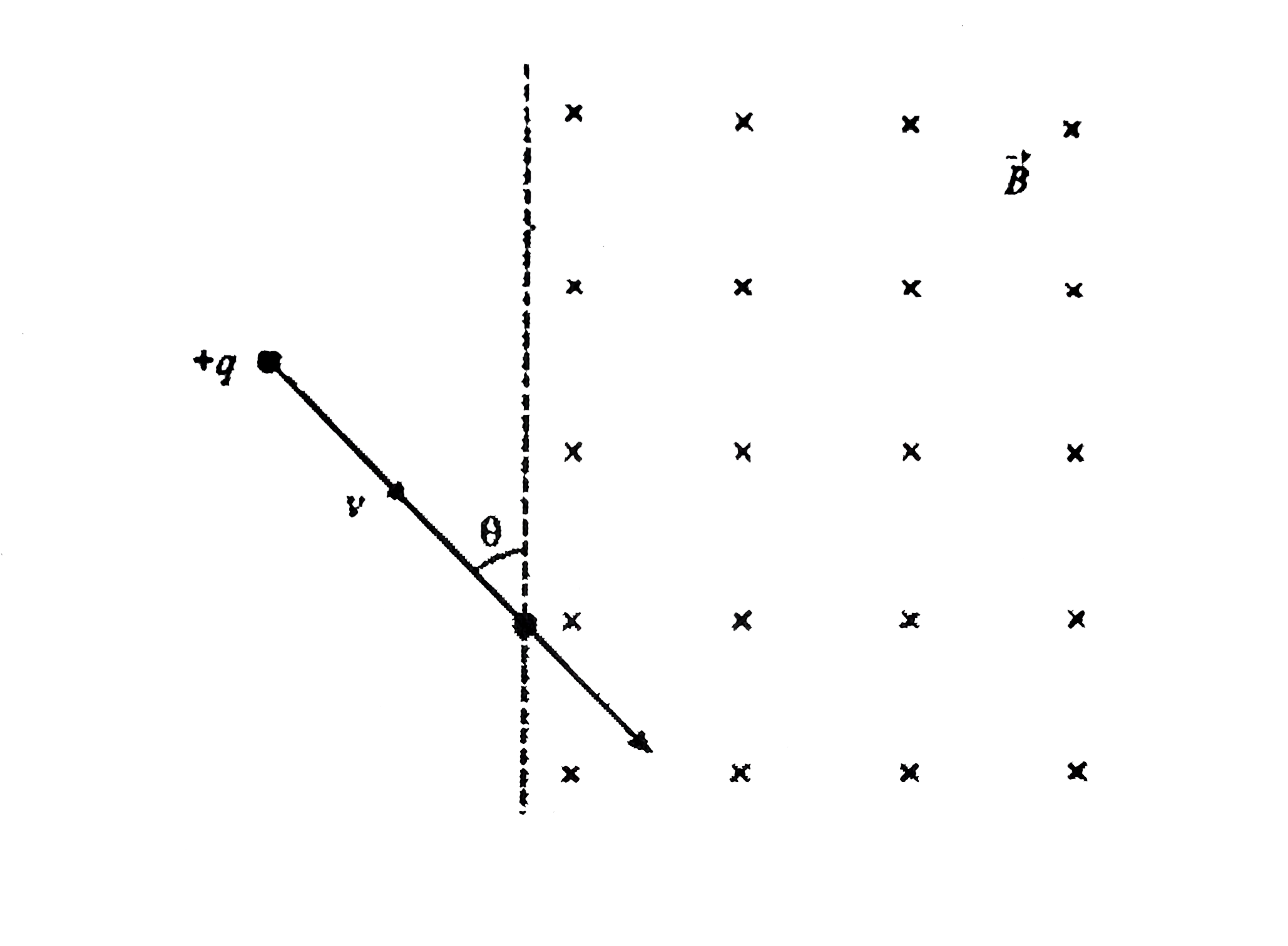A charged particle of mass m and charge q is accelerated through a potential difference of V volts. It enters a region of uniform magnetic field which is directed perpendicular to the direction of motion of the particle. Find the radius of circular path moved by the particle in magnetic field.
√(VmqB2)
2VmqB2
√2qVm(1B)
√(Vmq)(1B)
The correct Answer is:C
Step by step video, text & image solution for A charged particle of mass m and charge q is accelerated through a potential difference of V volts. It enters a region of uniform magnetic field which is directed perpendicular to the direction of motion of the particle. Find the radius of circular path moved by the particle in magnetic field. by Physics experts to help you in doubts & scoring excellent marks in Class 12 exams.
Topper's Solved these Questions
Similar Questions
A charge particle of mass m and charge q is accelerated by a potential difference V volt. It enters in a region of uniform magnetic field Bas shown in figure-4.93. Find the time after which it will come out from the magnetic field.
 View Solution
View SolutionA proton and an α-particle, accelerated through same potential difference, enter a region of uniform magnetic field with their velocities perpendicular to the field. Compare the radii of circular paths followed by them.
View Solution
Knowledge Check
- Question 1 - Select One
A charged particle of mass m and charge q is accelerated through a potential differences of V volts. It enters of uniform magnetic field B which is directed perpendicular to the direction of motion of the particle. The particle will move on a circular path of radius
A(√Vm2qB2)B2VmqB2C√2Vmq(1B)D√Vmq(qB) - Question 2 - Select One
A particle of mass m carrying charge q is accelerated by a potential difference V. It enters perpendicularly in a region of uniform magnetic field B and executes circular arc of radius R, then qm equals
A2VB2R2BV2BRCVB2RDmVBR - Question 3 - Select One
A charged particle, having charge q1 accelerated through a potential difference V enters a perpendicular magnetic field in which it experiences a force F. It V is increased to 5V, the particle will experience a force
AFB5FCF5D√5F
A proton an an α−particle, moving with the same velocity, enter a uniform magnetic field, acting normal to the plane of their motion. The ratio of the radii of the circular paths descirbed by the proton and α-particle is
View SolutionA charged particle q moving in a straight line is accelerated by a potential difference V. It enters a uniform magnetic field B perpendicular to its path. Deduce in terms of V an expression for the radius of the circular path in which it travels.
View SolutionA proton, a deutron and an alpha particle, after being accelerated through the same potential difference enter a region of uniform magnetic field →B, in a direction perpendicular to →B. Find the ratio of their kinetic energies. If the radius of proton's circular path is 7cm, what will be the radii of the paths of deutron and alpha particle?
View SolutionA charged particle , having charge q accelerated through a potential difference V enters a perpendicular magnetic field in which it experiences a force F. If V is increased to 5V, the particle will experience a force.
View SolutionA charged particle, having charge q1 accelerated through a potential difference V enter a perpendicular magnetic field region in which it experiences a force F. If V is increased to 5V, the particle will experience a force
View Solution

